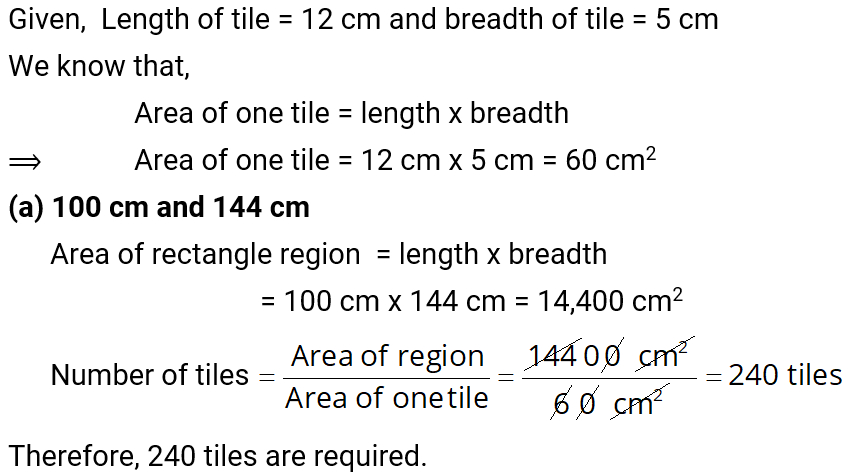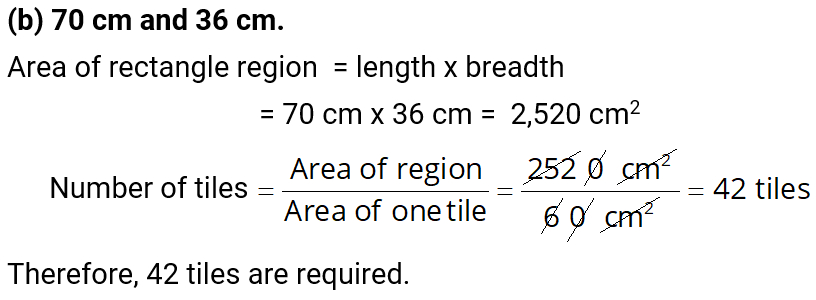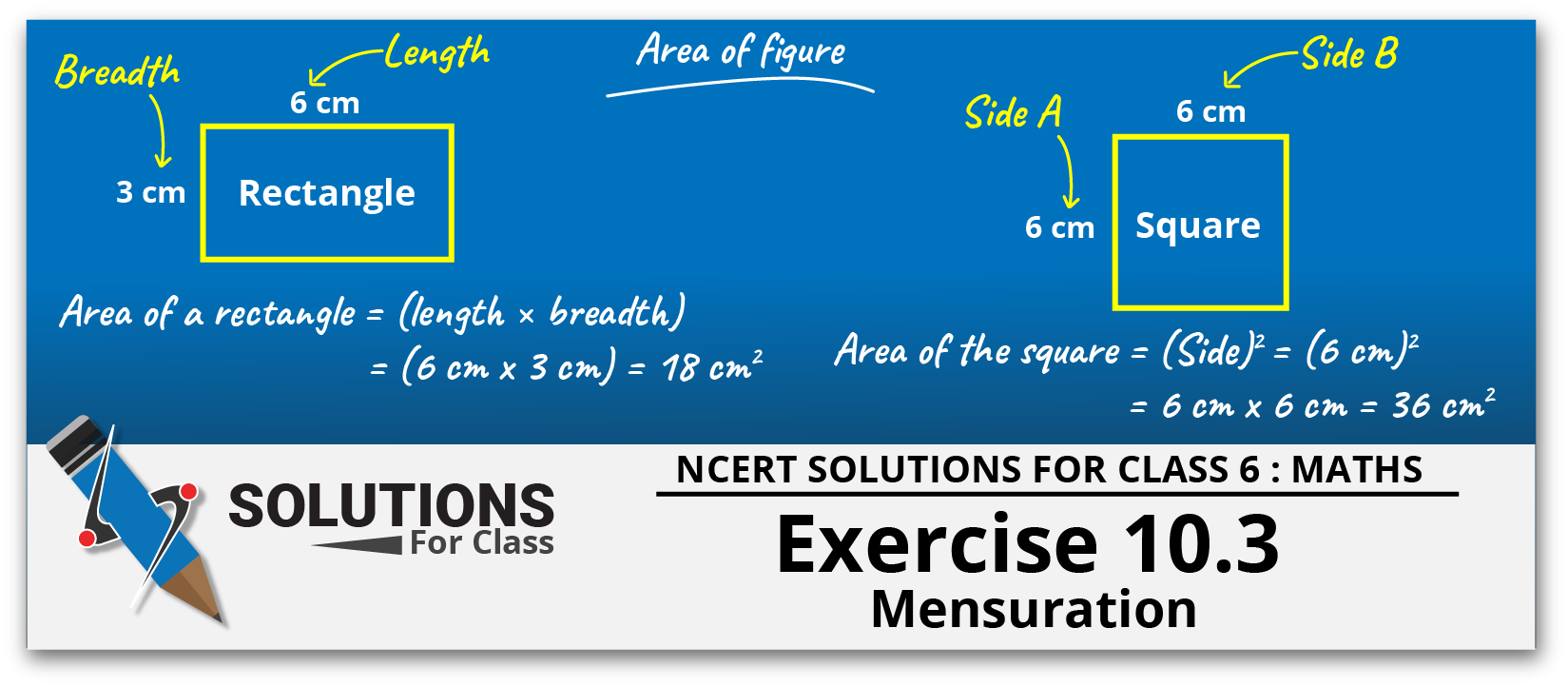
Table of Contents
ToggleNCERT Solutions for class 6, Maths chapter 10, Mensuration involves study of regions and their boundaries. Exercise 10.3 class 6, Mensuration is all about study of Area of Square and Rectangle. Student can go through deeply each questions. For better practicing, students should first learn the related formula. CBSE Class 6 maths chapter 10, exercise 10.3 has total 12 questions which are given below.
Mensuration, Exercise 10.3
Q.1. Find the areas of the rectangles whose sides are:
(a) 3 cm and 4 cm (b) 12 m and 21 m (c) 2 km and 3 km (d) 2 m and 70 cm
Ans: We know that, Area of rectangle = Length x Breadth
(a) 3 cm and 4 cm
Area of rectangle = Length x Breadth
= 3 cm x 4 cm = 12 cm2
(b) 12 m and 21 m
Area of rectangle = Length x Breadth
= 12 cm x 21 cm = 252 cm2
(c) 2 km and 3 km
Area of rectangle = Length x Breadth
= 2 km x 3 km = 6 km2
(d) 2 m and 70 cm
Here, 2 m and 70 cm = 0.7 m [∵1 m = 100 cm or 1 cm = 1/100 m]
Area of rectangle = Length x Breadth
= 2 m x 0.7 m = 1.4 m2
Q.2. Find the areas of the squares whose sides are: (a) 10 cm (b) 14 cm (c) 5 m
Ans: Area of square = (Side)2
(a) 10 cm
Area of square = (Side)2 = (10 cm)2
= (10 x 10 x cm x cm) = 100 cm2
(b) 14 cm
Area of square = (Side)2 = (14 cm)2
= (14 x 14 x cm x cm) = 196 cm2
(c) 5 m
Area of square = (Side)2 = (5 m)2
= (5 x 5 x m x m) = 25 m2
Q.3. The length and breadth of three rectangles are as given below: (a) 9 m and 6 m (b) 17 m and 3 m (c) 4 m and 14 m
Which one has the largest area and which one has the smallest?
Ans: Area of rectangle = length x breadth = l x b
(a) 9 m and 6 m
Area of rectangle = length x breadth
= (9 m x 6 m) = 54 m2
(b) 17 m and 3 m
Area of rectangle = length x breadth
= (17 m x 3 m) = 51 m2
(c) 4 m and 14 m
Area of rectangle = length x breadth
= (4 m x 14 m) = 56 m2
Therefore, the rectangle (c) has largest area, and rectangle (b) has smallest area.
Q.4. The area of a rectangular garden 50 m long is 300 sq m. Find the width of the garden.
Ans:

Q.5. What is the cost of tiling a rectangular plot of land 500 m long and 200 m wide at the rate of ₹ 8 per hundred sq m.?
Ans:
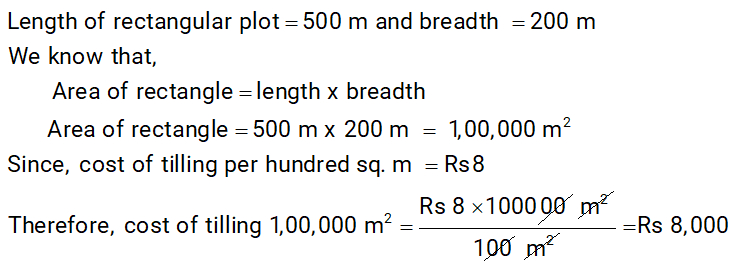
Q.6. A table-top measures 2 m by 1 m 50 cm. What is its area in square metres?
Ans: Length of table top = 2 m
Breadth of table top = 1m 50 cm = 1.50 m
We know that,
⟹ Area of table = length x breadth
⟹ Area of table = 2 m x 1.50 m = 3 m2
Therefore, the area is 3 m2.
Q.7. A room is 4 m long and 3 m 50 cm wide. How many square metres of carpet is needed to cover the floor of the room?
Ans: Length of room = 4 m
Breadth of room = 3m 50 cm = 3.50 m
We know that,
⟹ Area of room = length x breadth
⟹ Area of room = 4 m x 3.50 m = 14 m2
The area of carpet is equal to the area of room.
Therefore, 14 m2of carped needed to cover the floor of the room.
Q.8. A floor is 5 m long and 4 m wide. A square carpet of sides 3 m is laid on the floor. Find the area of the floor that is not carpeted.
Ans: Area of rectangular floor = Length x Breadth
= 5 m x 4 m = 20 m2
Area of square carpet = (Side)2
= (3 m x 3m) = 9 m2
Area of floor that is not carpeted
= 20 – 9 = 11 m2
Q.9. Five square flower beds each of sides 1 m are dug on a piece of land 5 m long and 4 m wide. What is the area of the remaining part of the land?
Ans: Side of flower square bed = 1 m
Area of flower square bed = (Side)2
= (1 x 1) m2 = 1 m2
∴ Area of 5 square bed = 5 x 1m2 = 5 m2
Area of rectangular land = Length x breadth = (5 m x 4m) = 20 m2
Remaining part of the land = Area of land – Area of 5 square bed
= 20 m2 – 5 m2 = 15 m2
Therefore, remaining part of the land is 15 m2.
Q.10. By splitting the following figures into rectangles, find their areas (The measures are given in centimetres)

Ans:
(a)
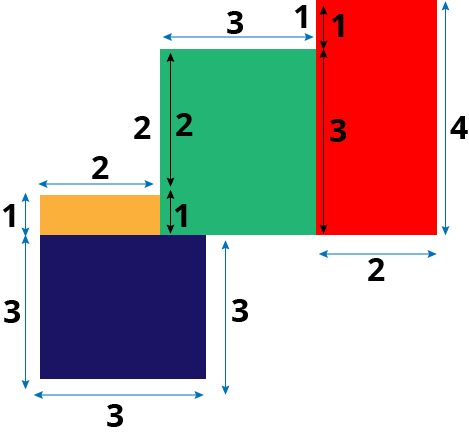
Area of rectangle (RED) = Length x Breadth = 2 x 4 = 8 cm2
Area of rectangle (GREEN) = Length x Breadth = 3 x 3 = 9 cm2
Area of rectangle (YELLOW) = Length x Breadth = 2 x 1 = 2 cm2
Area of rectangle (BLUE) = Length x Breadth = 3 x 3 = 9 cm2
Total area = (8 + 9 + 2 + 9) cm2 = 28 cm2
(b)
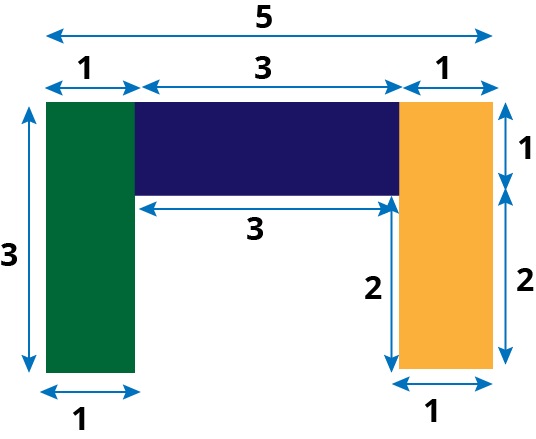
Area of rectangle (GREEN) = Length x Breadth = 3 x 1 = 3 cm2
Area of rectangle (BLUE) = Length x Breadth = 3 x 1 = 3 cm2
Area of rectangle (YELLOW) = Length x Breadth = 1 x 3 = 3 cm2
Total area = (3 + 3 + 3) cm2 = 9 cm2
Q.11. Split the following shapes into rectangles and find their areas. (The measures are given in centimetres)
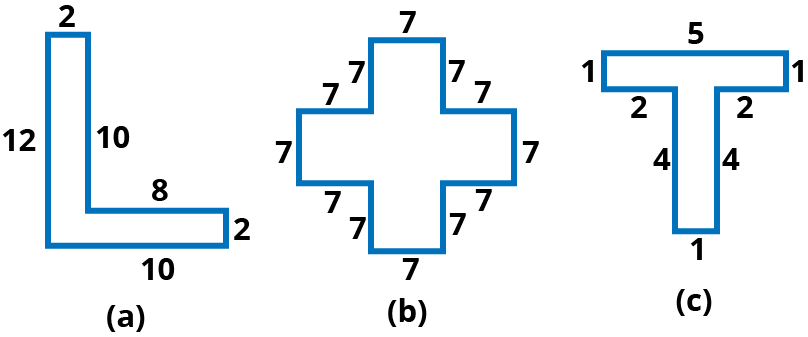
Ans:

Area of rectangle ABCD = 12 x 2 = 24 cm2
Area of rectangle DEFG = 8 x 2 = 16 cm2
Total area of the figure = (24+16) cm2 = 40 cm2
(b)
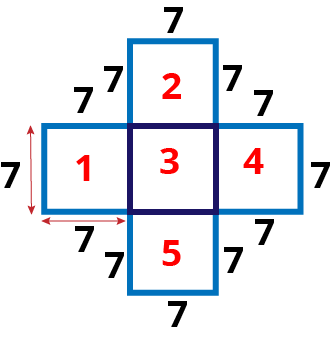
There are 5 squares each of side 7 cm.
Area of one square = (Side)2 = (7 cm)2 = (7 cm x7 cm) = 49 cm2
Total area of 5 squares = 5 x 49 cm2 = 245 cm2
(c)

Area of rectangle ABCD = Length x Breadth = 5 x 1 = 5 cm2
Area of rectangle PQRS = Length x Breadth = 4 x 1 = 4 cm2
Total area = (5 + 4) cm2 = 9 cm2
Q.12. How many tiles whose length and breadth are 12 cm and 5 cm respectively will be needed to fit in a rectangular region whose length and breadth are respectively:
(a) 100 cm and 144 cm
(b) 70 cm and 36 cm.
Ans:
